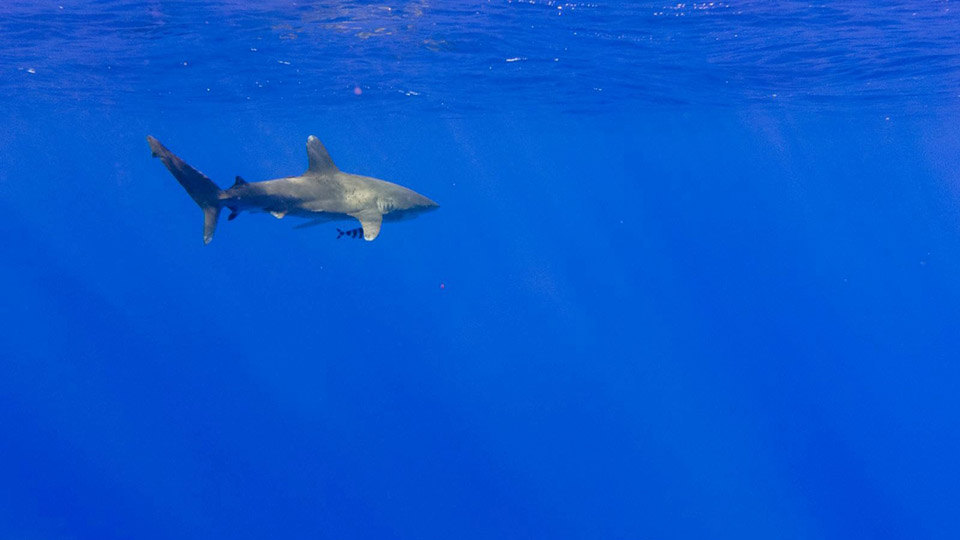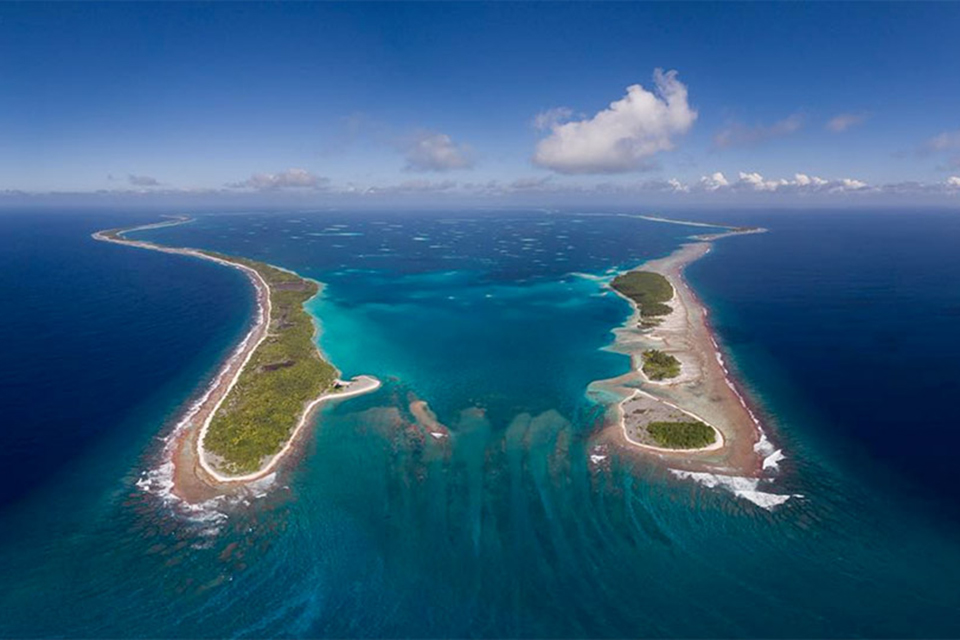In April-May 2018, we completed the first shark research on the island of Penrhyn, which is the northernmost island in the Cook Islands. An expedition to Penrhyn has been a dream since before Sharks Pacific was born. Penrhyn is believed to be the sharkiest island in the Cooks.
In recent years several locals had proposed a shark cull because they felt that there was an overabundance of sharks. Fishermen were frustrated because the sharks were reportedly taking too many of their fish (meaning when the fishers caught a fish, the shark would ‘tax’ it before the fishermen could get the fish into the boat).
It has been imperative that we get a team to Penrhyn as soon as possible. We needed to develop relationships with the local community (about 150 people in total) to understand their experiences and frustrations. This would help us design a research plan and discover important information such as what sharks were there, in what abundance, how many fish were they taking from the locals, and whether was it the same handful of animals or different sharks each time.
There are no regularly scheduled flights or ships so our team had to be flexible with dates. It took two years to raise the funds and then secure a ship to get to Penrhyn. After months of false starts, we finally found a ship but that only gave us approximately 10 days before departure. Our team was spread across the globe at the time, but we managed to pull it off.
We left Rarotonga with an incredible team consisting of Sharks Pacific’s Executive Director, Jess Cramp, two young Cook Islanders as research assistants, Terii Pittman and Marino Evans, one Cook Islands-based American marine biologist, Kirby Morejohn, and freelance photographer and videographer, Erin Feinblatt. We were aboard the rusty, trusty cargo ship Tiare Taporo—who hadn’t left the harbor in more than two years—for seven days and six nights before reaching our destination.
Penrhyn is a stunningly beautiful island and the lagoon looked like an ocean itself, dotted with brilliantly colored coral heads that were surrounded by water that is a deep shade of indigo blue that only exists in this part of the world. Our team, despite having a rough trip up there, was incredibly excited about the opportunity to spend a month—or more, depending on whether or not the cargo ship came back for us—living and working in Penrhyn.

(Left to right, Marino Evans, Terii Pittman, Jessica Cramp, Kirby Morejohn) Photo: Erin Feinblatt
Our research goals were three-fold:
- Create a baseline of the sharks present on Penrhyn’s reefs
We did this by dropping baited remote underwater video cameras (aka BRUVs) and talking to locals. We managed to complete over 140 camera drops—leaving us with over 140 hours of footage to watch. We had the students from Omoka School join us on several occasions.
- Tag sharks
Specifically, we were looking for oceanic whitetip and silky sharks to fit with satellite tags, which would help us track their movements. Unfortunately, we didn’t find any of our target species, but we did place identification—not satellite—tags on five different species of shark including: whitetip reef sharks, blacktip reef sharks, silvertip sharks, dusky sharks and grey reef sharks.
- Understand the human–wildlife conflict at large beginning with the community
We wanted to find out what the community was seeing, experiencing and feeling when it came to their daily interaction with sharks.
Our team rented a two-bedroom house from one of the community members and hired local fishermen to take us out for research. We worked alongside locals throughout the process and held several presentations. We felt extremely thankful for the opportunity to conduct research, learn about the island, and get to know the community.
In total, we spent five weeks on island and two weeks at sea. We’re still going through our data, but we can confidently say that thus far, Penrhyn has the highest number of reef sharks in the Cook Islands, and possibly the Pacific. We’ll be sure to share updates once we’ve analyzed all of our data. Most importantly, our team now feels like a family and we’ve been invited back to the island to continue our research. This was a huge success. But, it’s the start of a longer process of work with the community and its sharks.

(An aerial view of the team tagging, and no shortage of sharks; Photo: Kirby Morejohn)
And although we were unsuccessful in deploying any satellite tags on oceanic whitetip sharks in Penrhyn, the week we got home to Rarotonga we received a text from a local fisherman. He was pretty sure there was an oceanic whitetip under his boat and if we hurried, we could try to tag it. With a tagging box ready, we quickly rallied our team and headed out to the guys, who were drip-feeding this shark with tuna they’d caught.

(Oceanic Whitetip Shark, Photo: Kirby Morejohn)
We were beyond grateful that they were doing this for our research. It was incredible to see the animal hanging around their boat, considering we’d just spent months trying to find one to no avail. Within 30 minutes of leaving the harbor here in Rarotonga, we had caught the mature male shark, deployed a satellite tag, and then released him.
High fives all around, but we still have many more tags to go.
This work was generously supported by Lyda Hill Philanthropies and National Geographic Society.




